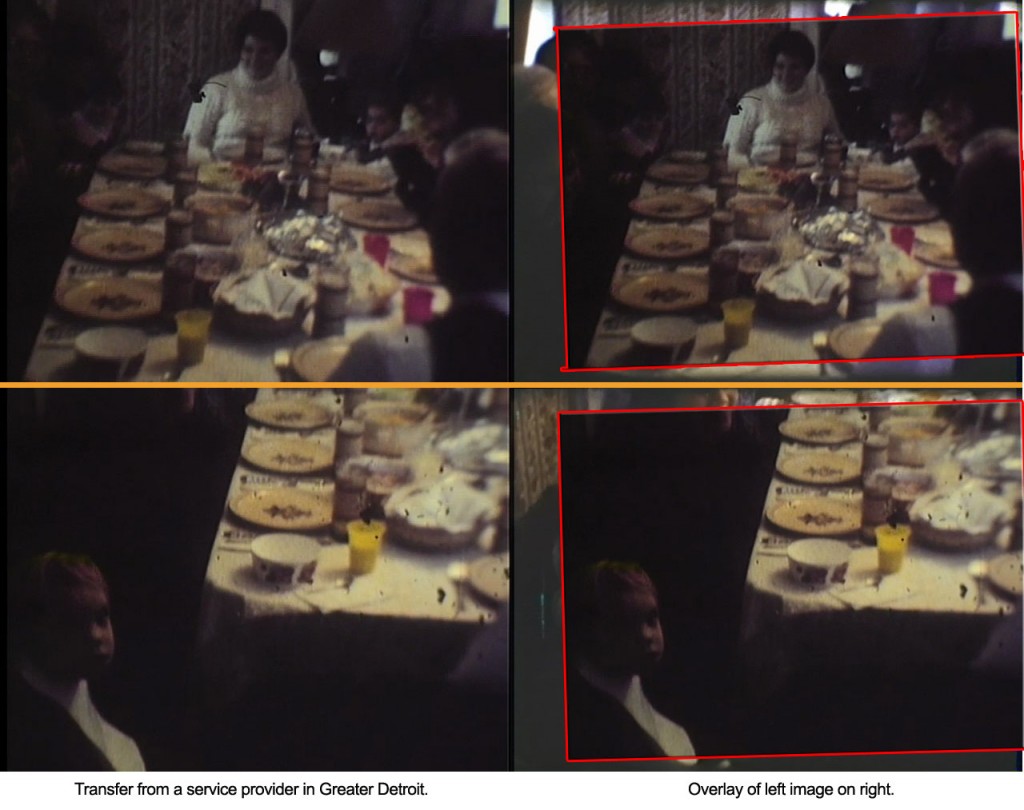We are presenting a continuing series to explain what effects, phenomenon, and peculiarities one should look for in evaluating the quality of a home movie film conversion and transfer to DVD. These considerations are applicable to regular 8mm, Super 8mm, as well as 16mm home movie film conversion and transfers. The consumer does not have to be an expert but merely needs to know some key elements to be aware of. There are many service providers in the Greater Detroit area that will perform these services with varying degrees of excellent quality. Truly, many are excellent. However, it only makes sense to do some homework first so that you can avoid others which might give you disappointing results.
In this fifth installment we will examine the consideration of getting your whole frame.
Home movie film transfers look so much more crisp and nice if they have a nicely defined edge at the periphery. While 16mm film is much better at having such a nicely defined edge, the sad truth is that 8mm film usually does not. Consider first that just getting into home movies was a budget buster for most families. Consequently, home movie film camera manufacturers looked for ways to lower the cost and thereby compete more effectively in the home movie film market. By lowering the quality in areas that consumers were either not aware of or could easily tolerate the manufacturer could hit a home run. A prime candidate for getting hit was the film gate of the home movie motion picture camera. There are a variety of limitations resulting from this but one of the big ones is a fuzzily defined periphery and especially so on the entry level 8mm home movie cameras. There were also other factors affecting even the high-end equipment such as dust and dirt that collected in the film gate of the camera and became a permanent part of the picture being exposed onto the film itself.
When some service providers transfer your 8mm home movies to digital media they will sacrifice some of the imagery in the periphery in order to get a sharply defined edge. This is not necessarily a bad practice but one of preference. If done with precision it may even be a favorable preference. At W. Cardone Productions our preference is to let you actually see the periphery of your 8mm home movies and then carefully control the image capture such that the film’s periphery is at the outermost edge of the video frame. When you see a rough edge on the periphery you know that you were given the entire frame of your 8mm home movie. The severity of the rough edge, though, depends on the original film exposure.
Now, let us describe the problem that can arise from trying to hide the original periphery and thereby have a nicely defined edge on the frame. The problem arises when the person doing the home movie transfer gets sloppy and does not carefully center and maximize the view capture. This is very easy to do and especially so when cranking through an arm load of home movie film transfers.
Please examine below still frames given to us by a client who took some time to compare home movie transfer services. In the illustration you will see the competitor’s frame on the left and ours on the right but with the competitor’s frame overlaid on ours. With this overlay you can see the portion of the original frame that the competitor missed. Examine the periphery of the still frame on the right and you will see a rough edge. Because the rough edge is at the outermost edge of the video frame you know that your capture was carefully aligned and centered.
To be fair, though, this particular competitor (at the time of the comparison, 2011) charged significantly less than we did. It would therefore be fair to say that their home movie transfer service is a worthy consideration if shopping for a price point. However, in 2018 that enterprise is no longer in business.
